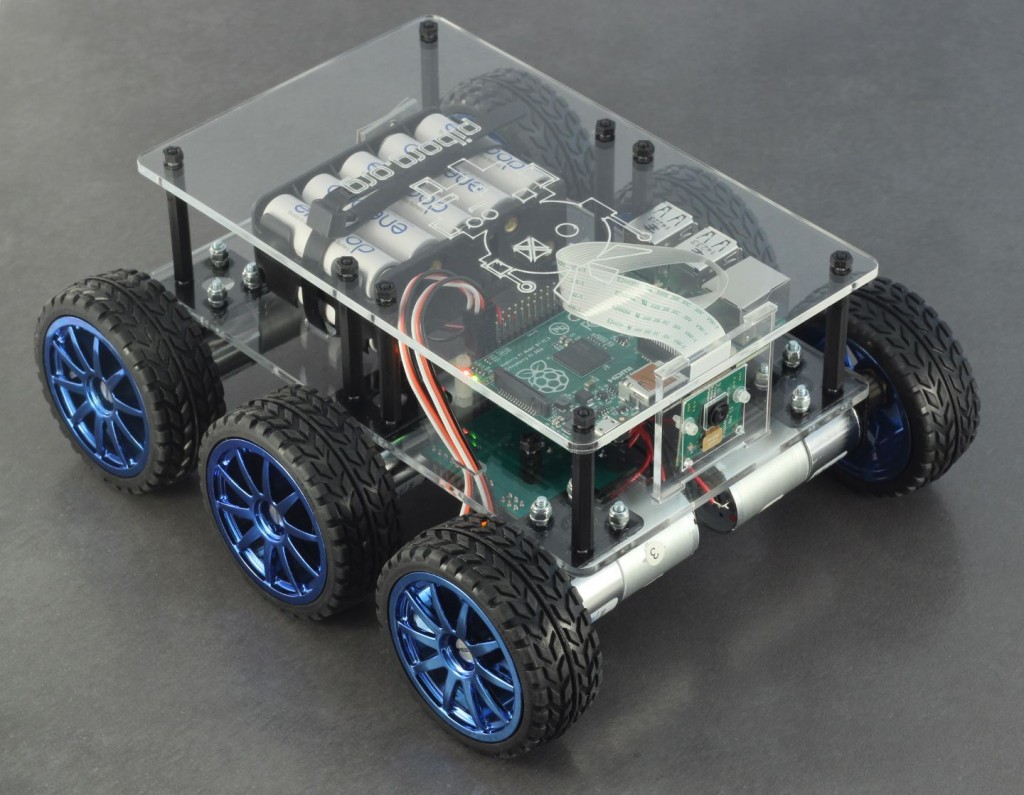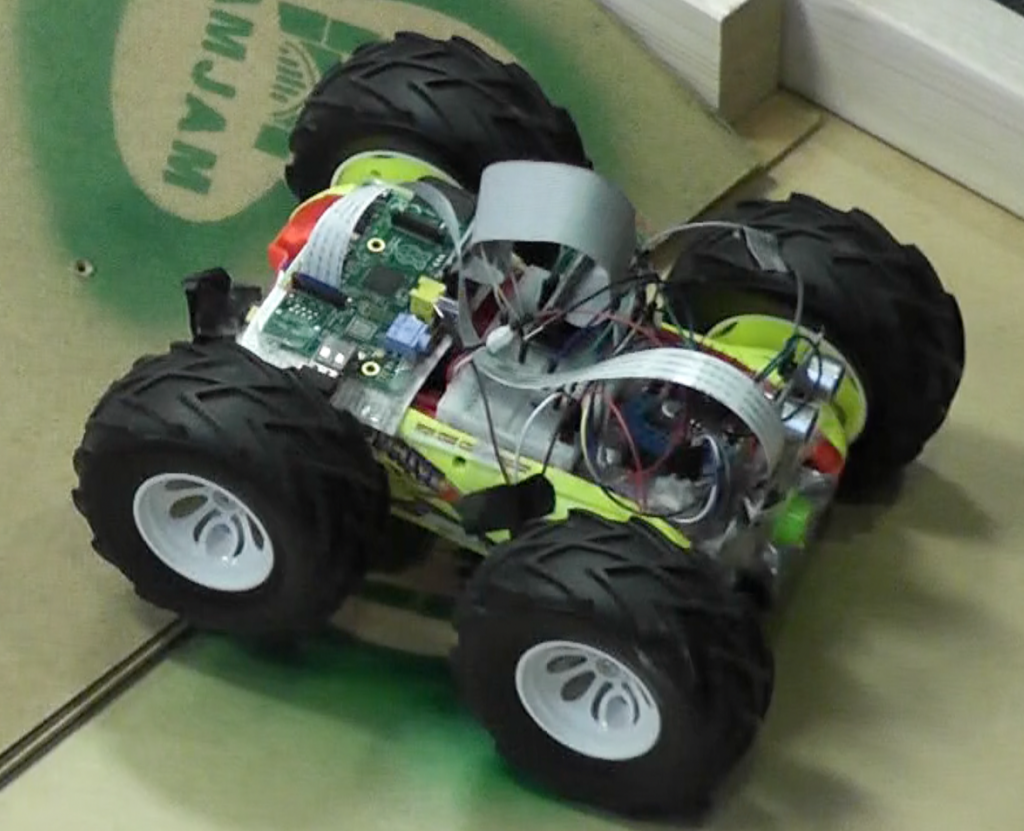
On Saturday was the first PiWars competition at Cambridge Raspberry Jam (#CamJam). It was an excellent event. I was one of the judges, which proved to be quite difficult, but a lot of fun. The whole day went very well, there were several competition events…
- Sumo – Robots trying to push each other beyond the boundary
- Obstacle course – negotiate a range of different obstacles, some of which were positively evil
- Speed test (straight line)
- Line following – following a twisty, turny course
- Golf – try to direct the ball into the hole as efficiently as possible
- Proximity – try to stop as close to a barrier as possible without touching it
- 3-point turn
About 20 robots took part and the atmosphere was great at the Institute of Astronomy, Cambridge. The lecture theatre was used as the pits, where people could prep their robots for the events and make any necessary tweaks or repairs. The robot golf and proximity competitions were also done in there.
The rest of the events were spread out throughout the building. Each event had its own custom-made course and these worked really well.
There was also a show and tell area and a small marketplace area.
Matt Manning made a nice overview video of the event…
I was judging two categories…
- Smallest Robot
- Best Non-competing Robot
Smallest Robot
Smallest robot was relatively easy. This went to Stephen Salmon’s “Mini-Me” which was a clever hack of an A+, a small set of toy caterpillar tracks from a model tractor, an H-bridge motor controller and a small battery pack. Here’s what it looks like…
Brian Corteil also made a really nice tiny robot called Pyrobot (with build instructions here), but it was a bit bigger than “Mini-Me”
Best Non-competing Robot
This was much more difficult to choose. In the end I broke it down into main categories, Pro and Amateur, and then, in consultation with Mike, decided to award the prize to the amateur category.
Pro
In the Pro category, Gert’s Toast-E was very impressive – an A+-based, camera streaming, 4-wheel-drive RC car controlled by wifi. Gert told me that Dom Cobley has found a way to do streaming on the GPU which reduces the lag time. He’s going to be publishing some details of that quite soon.
Diddyborg, from PiBorg is also a really nice premium robot in the pro category.
Amateur
In the amateur category, Zachary Igielman got an honourable mention for his line following robot that worked superbly well. The overall winner of best non-competing robot went to Alex Ellis with his modified remote control car running on a model A through either bluetooth + Wiimote or wifi and Nginx, Node Red and laptop combo.
Both control methods were very effective. He’d obviously worked hard on getting it working well. Had he been competing, he would also have come second in the speed test. His robot managed 3.6 seconds, but the winner got 3 seconds. I dare say, with those monster truck wheels, he would have done very well on the obstacle course too.
Overall?
I had a great day. PiWars was excellent. There were many excellent robots and many excellent people there. I won’t attempt to catalogue everything that went on because plenty of other Pi Bloggers/Vloggers were there too. Everyone will have something different to say about it. But I think everyone will agree that it was really well organised and run and it should definitely happen again. Well done Mike, Tim and Andy for bringing it all together. Thank you guys.
Updates
I’ll list other blogs/videos on the subject as and when they appear…
Here’s Spencer Organ’s video…
PiBorg videoed some of the Straight Line speed test which they ran…
Frank Carver’s video…


[…] CamJam PiWars – Alex Eames, RasPi.TV […]
I sure like: Alex Ellis’ Hacked RC Car! Will you supply Schematic and code?
He works at the same place as Tim @Geeky_Tim so maybe you could get in touch through him?
Best bit about Alex’ RC car for me was discovering it didn’t use an Arduino or anything like that. He uses RPIO which supposedly lets the Pi handle all of the ‘PWM-type stuff’. How? No idea.
I think it uses software pwm.
Hello chaps,
Brilliant day and great to be a part of it.
For PWM I am using a library which makes use of DMA timing so that you can enable PWM on many pins at once. It does work very well and I’ve also used it for servos – I haven’t detected any jitter. It means no Arduino is needed as AverageMan says and the code is a lot simpler.
Here is the library I’m using which has a python wrapper available.
https://pythonhosted.org/RPIO/pwm_py.html
I’ll look at getting some basic examples on GitHub along with the wrapper in Node.js ( not node red :) ) that I put together.
@Ted feel free to get in touch – I’m using a L298 motor controller directly controlled through GPIO pins and the motors which were already in the chassis. I’m using 1x 7.4v 2S LiPo 1300mah to power both the PI and the motors – the L298 gives a 5v output.